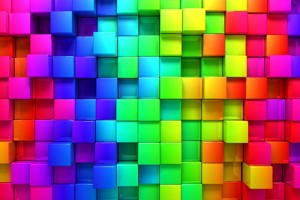 Last year I wrote about the Bitcoin revolution and some of the implications to our financial, currency, and trading systems. At that time, a single Bitcoin was worth $1,100 but now is only worth $379. There are wild price swings and talk of dissent among Bitcoin developers, as outlined in a recent Wall Street Journal article. Whether Bitcoin or some other crypto-currency survives in the long run, I think the most interesting story is the blockchain technology behind the rise of Bitcoin and the wide-ranging uses for this development.
Last year I wrote about the Bitcoin revolution and some of the implications to our financial, currency, and trading systems. At that time, a single Bitcoin was worth $1,100 but now is only worth $379. There are wild price swings and talk of dissent among Bitcoin developers, as outlined in a recent Wall Street Journal article. Whether Bitcoin or some other crypto-currency survives in the long run, I think the most interesting story is the blockchain technology behind the rise of Bitcoin and the wide-ranging uses for this development.
Blockchain Explained
A blockchain can best be described as a ledger or database that exists simultaneously on hundreds or even thousands of systems. All of these copies are cryptographically connected to ensure data security.
In the case of a Bitcoin, every time a coin or a fraction of a coin is used, that transaction is recorded on the ledger. The database or registry records who had the coin and who now has the coin, which prevents a coin holder from spending the same coin multiple times. Because this registry is replicated in several identical databases simultaneously, someone attempting to hack into a system to steal the coin would have to hack into all of the systems at the same time. Changing only one instance of the registry alerts the other systems of the fraud and blocks the transaction. If blockchains can be used for currency, what are other possible uses for this technology?
Title Chains
Anything that requires a title could make use of blockchains. When you purchase a home or a vehicle, you need to know the person selling that property really owns it. A title tracks ownership through the life of the property. When you purchase the property, you are added to the title. This process takes a lot of resources, both human and computer, and is not immune to fraud.
When I sold stock, I had to send my paper certificate to a broker to prove that I was indeed the owner. When I bought stock, the broker sent me a newly issued certificate to prove that I was the owner. Now the exchange is executed electronically, but it can still take up to three days to complete a transaction because of all of the systems and humans involved in the process. All of these transactions could be simplified by secure blockchain technology, which would be quicker and would reduce risk and amount of paperwork.
Developing Countries
I think that developing countries could benefit greatly by using blockchain technology. Many of them do not have a secure title transfer infrastructure which limits their ability to buy and sell goods and services. Blockchains can be registered in small increments, even cents, so they can be used by entrepreneurs wanting to sell locally and worldwide without employing costly brokers.
Thinking on a larger scale, if an entrepreneur wanted to start a company, they could sell fractional shares in the company with each share secured by a blockchain transaction. The computing infrastructure does not need to reside in the community or even in the country but could be anywhere in the world. The transaction costs can be a lot lower, thus ensuring that more of the profit is kept in the community and reinvested for future growth and opportunities.
Thoughts
I am excited by the fact that technologies such as blockchains can create new opportunities. Coupled with other emerging advances, such as green power and wireless communications, this has the potential to be a game changer. Let me know your thoughts.
Kelly Brown is an IT professional and assistant professor of practice for the UO Applied Information Management Master’s Degree Program. He writes about IT and business topics that keep him up at night.




